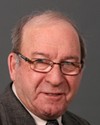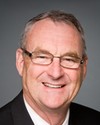I can talk only about my own experience in two or three communities in which I worked in the past 20 or 25 years.
Looking at primary education, it varies from community to community. I'm using Iqaluit as an example. A large portion were coming into the primary system, let's say at kindergarten, and a certain number would exit at the end. Looking at the grades in between, at K to 5, the attendance is fair to good, in some places very good, depending on your location, the makeup of the community, and how you run your programs. Attendance is based on your commitment to the community and your role as a school in the community.
Yes, a good number of students coming in at the primary level exit grade 5 in fair to good numbers, and beyond that, I may not have the right numbers. If I gave specific numbers, I would just be guessing. I would like to emphasize some of the good students that also come out at the grade 12 level and go on to other programs at NS, Arctic College, or other colleges across Canada. For example, in the last year, you could find the kids coming out of high school in Iqaluit, for example, in colleges across Canada and also in various universities across Canada--many in this group here.
Yes, at the primary end, from my own experience I can say that the space and the lack of personnel are always problems. I'd like to see more Inuit teaching in Inuktitut across Nunavut. I think we are moving towards that, but there's lots to be done.



